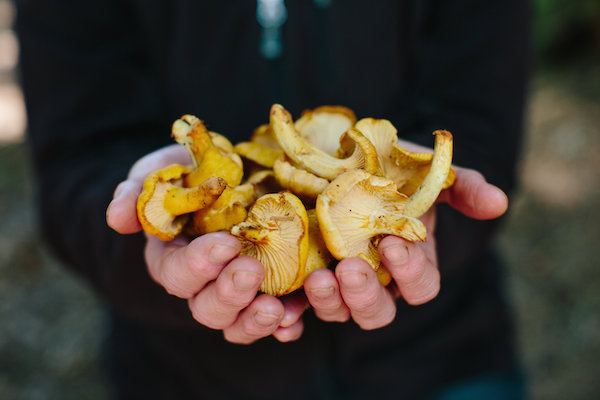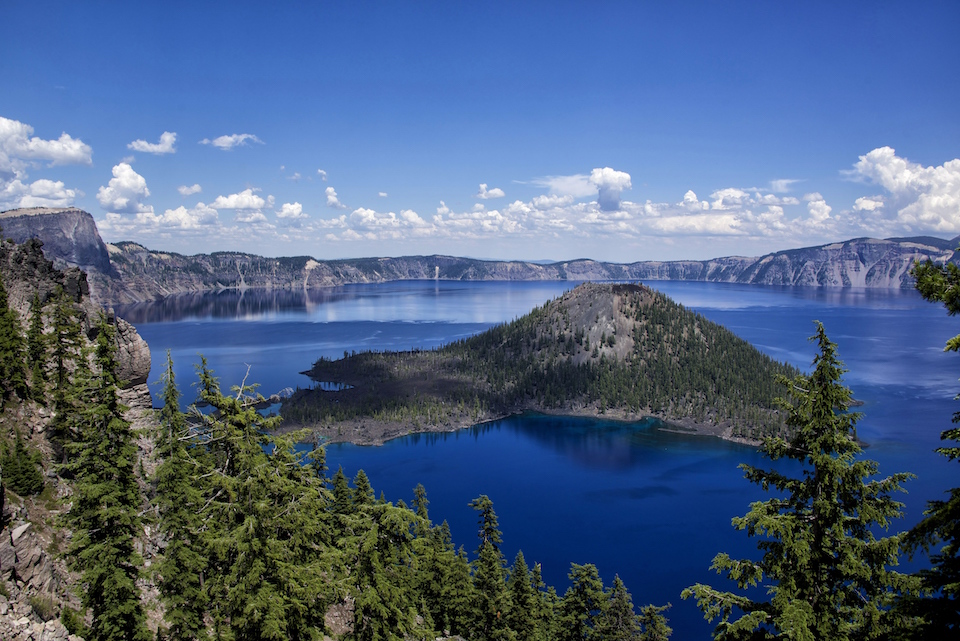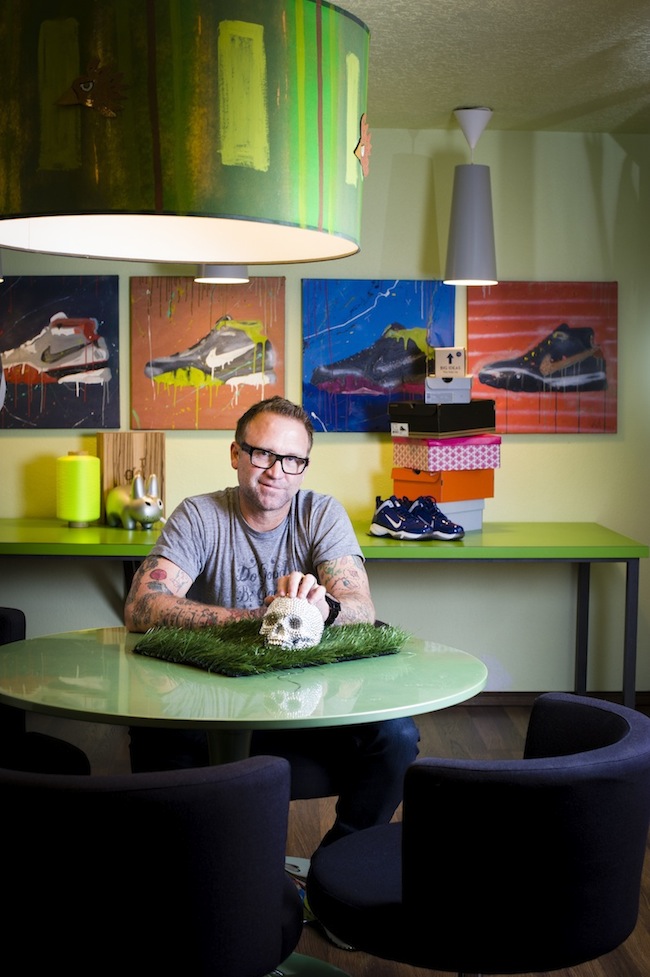written by Anna Bird | photos by Rob Kerr
The mind wanders. A million
Summers, night air still and the rocks
Warm. Sky over endless mountains.
All the junk that goes with being human
Drops away, hard rock wavers
Even the heavy present seems to fail
This bubble of a heart.
Words and books
Like a small creek off a high ledge
Gone in the dry air.
Excerpt from “Piute Creek” by Gary Snyder
In the backcountry—vulnerable to the natural elements and without the comforts of home—Sage Clegg finds solitude, clarity, simplicity. Even when she’s lonely or tired; when her socks are wet or her tent gets knocked over by gusts of wind; when she is stalked by a mountain lion or encounters rattlesnake after rattlesnake; even when her legs feel like jelly and her throat is dry, life in the wild is uncomplicated and beautiful. The land and its inhabitants provide challenges, and she just has to adjust and keep going. Simple.
Land management—who uses the land, how they use it, what is gained and what is lost—however, is complicated.
When a group of armed men took over the Malheur National Wildlife Refuge on January 2, the conversation regarding public lands in the West catapulted the issue of land management into the national spotlight. A little known place in Eastern Oregon became front-page news. In a nearby county to the unrest, another disagreement and claims of government overreach surround the Owyhee Canyonlands Conservation Proposal.
People struggle with the right ways to keep the West wild. As someone who has hiked more than 10,000 miles in rugged, remote places throughout the country, Clegg believes in public lands. As the first person to have hiked the 750-mile Oregon Desert Trail through Eastern Oregon, she also believes a blanket statement doesn’t always cover it.
Clegg, a 36-year-old biologist and thru-hiker, has built a life around her infatuation with the natural world. In 2010, she became the first woman to hike the Triple Crown—a feat that includes the Pacific Crest Trail (2,650 miles), the Continental Divide Trail (3,100 miles) and the Appalachian Trail (2,180 miles)—in less than eighteen months. Six years later, she still holds the record, though she’s hoping her friend Mary Moynihan shatters it this year.
After working as a backpacking instructor with Outward Bound for seven years, she found a seasonal job in the Mojave Desert studying tortoises. This spring the assignment involved walking 12-kilometer square transects every day for fifty days to collect data on tortoise populations.
“I basically just walk through the desert and look at every hole in the ground, under every bush, and then something comes of it,” Clegg said, with a laugh. “Which is kind of amazing that this could be my job … Every day, I’m in a new spot, and it blows my mind. I think, Wow! This exists? Who knew!”
Shortly after accomplishing the Triple Crown, setting a record she never intended to set, Clegg designed her own 1,200-mile route in California. She wanted to get off the well-trodden trails, so she blazed her own—literally. Her route, the Japhy Ryder Route, is named after Jack Kerouac’s character in Dharma Bums, a novel inspired by poet Gary Snyder. Leaving from Cape Mendocino, the trail climbs over the Yolla Bolly Mountains, traverses the central valley, the Sierras and Mt. Whitney, before dropping into Death Valley. It goes through Snyder’s turf, as well as Clegg’s—she grew up in the small town of Willits in Mendocino County.
In 2011, she met her partner, Adam Drummer, on a tortoise research assignment. Their first date was to hike the Japhy Ryder Route. “It was a great way to start a relationship!” Clegg said. Following the hike, she moved to Bend to be with Drummer after living the life of a nomad for nearly eight years: couch-surfing and sleeping in the back of her Toyota Tacoma. Now, her “frontcountry” life, as she refers to life within city limits, involves an uncharacteristic number of domestic activities. She and Drummer have remodeled their bathroom and kitchen; in the winter she cans and sews; and in the summer she gardens.
When she moved to Bend, Clegg heard about a new Oregon thru-hike in the works, and it caught her interest. Brent Fenty, the director of the Oregon Natural Desert Association (ONDA), a conservation group in Bend, dreamt up the Oregon Desert Trail. The proposed route, more than 750 miles long, stretches through the vast, lesser-known high desert of Eastern Oregon. From the Oregon Badlands Wilderness east of Bend to the Owyhee Lake State Park near the Idaho border, the route diverts south through the Hart Mountain Antelope Refuge, over to the Steens Mountain, through the Alvord Desert and up through the Owyhee Canyonlands.
“The intention with the Oregon Desert Trail was simply to connect people to public lands, to help grow awareness of remarkable places throughout Oregon’s high desert,” Fenty said. “And in doing so, create a dialogue between locals and people across the state who love Oregon’s high desert, and likewise, contribute to the local economy.”
To judge the potential of the route, they needed someone to hike the whole thing and report back. Because of the nature of the trail—its remoteness, complexity and lack of resources—ONDA needed someone with a good attitude, experience and resourcefulness.
For Clegg, hiking the ODT was like shaking hands and having deep conversations with her new home state. She acquaints herself to place by walking and listening to it. (Though, she did bike about 200 miles of the ODT.)
“When I get to know a new place my world gets bigger,” Clegg said. “I see beauty that makes my heart sing. I see small ants toiling away, bats flying by at sunset, flowers nodding in the breeze, sun baked rocks, algae filled pools of water, pronghorn bouncing away. I can almost feel time when I’m out in wild places, and I am reminded that this all would still be going on without me, but I’m lucky enough to be a part of it.” It’s all quite poetic—much like the fact that her parents named her Sage for no particular reason and now she has a thing for deserts.
For ONDA, Clegg hiking the ODT presented a prime opportunity to publicize the trail, as well as the lands it goes through that they’re hoping to protect—including the Owyhee Canyonlands. ONDA enlisted Clegg to blog throughout the trip, meet up along the way to hand off Go-Pro footage and trail data, let a production crew film her at points along the way (resulting in Sage Steppes: 800 Miles on the Oregon Desert Trail), and field media attention at the beginning and end of the trail.
On June 5, 2013, amidst the camera flashes and questions from local media at the start of the route, someone asked, “Were you inspired by Cheryl Strayed?” Clegg acknowledged Strayed’s accomplishment, but, pointed out, she had been hiking long before Wild hit bookshelves just months before.
“I have been in love with hiking since I was 14,” Clegg said. To date, she has hiked more than 10,700 miles, and 90 percent of those have been solo. On the PCT, she was stalked by a mountain lion and suffered a few sleepless nights after but nothing more serious. On the ODT, she encountered nine rattlesnakes in one day in the Owyhees, but evaded their bite. To fend off loneliness, she packs chocolate and jerky, or the rare hot meal. She reads maps like she reads books, bringing the same kind of interest and imagining the possibilities the marks and shades and patterns represent.
In 2015, Clegg joined the board of the Bigfoot Trail Alliance after hiking the 360-mile trail through Northern California and a piece of Southern Oregon the year before. The alliance is a nonprofit supporting the establishment of the trail. Thirty-two different species of conifers along the route piqued Clegg’s interest. It was like a scavenger hunt.
“I think that the more people get out and hike in these places that are hard to find and remote and rugged, the more that they’ll enjoy and get to know them,” she said. “And then that place is on the map of that person’s mind … I think there’s just something great about when people—whether or not they decide to stand up and protect it or whatever it is—at least they know it exists, and they have an emotional attachment to it.”
Of all the miles Clegg has hiked, the ODT presented a unique set of challenges. For starters, it’s a logistically intense trail by nature, involving long stretches without water and harsh terrain. One particularly tough day involved legs welted by stinging nettles and shoes full of gravel, compounded by intense loneliness. But she had to keep going— simple.
In a more abstract, messy way, the experience made her rethink some of her previous notions about wilderness and the politics of land.
“I wasn’t sure about wilderness designation anymore,” Clegg said. When she left Bend, she thought wilderness was an ideal designation. The ODT goes through a few wilderness study areas, but hardly any actual wilderness, and after finishing the trail and meeting people along the route, her beliefs became murky. “I met these amazing ranchers who knew the landscape so well, and they knew it in a very different way than someone like me who’s just going to pass through.” She hopes that these people have a valued seat at the table when it comes to finding the best ways to preserve Oregon’s wild places.
During her thirty-seven days on the ODT, Clegg became well-acquainted with cow tanks and cow pies; she observed horned lizards, bighorn sheep, avocet, snakes, cows, pronghorn antelope, raptors, ducks, egrets and sage grouse; she studied the geological history and ancient petroglyphs; she endured rain, hail, snow, thunder, lightning and temperatures ranging from 30 to 107 degrees; she admired waterfalls, towering rock spires, cracked desert land, rugged valleys and twisty canyons. The locals along the way asked different versions of “What are you doing out here?”
In the current polarized social and political climate, it may be convenient to pick one side over another, drawing a line in the dirt. After Clegg got to know that 750-mile stretch of Eastern Oregon, she has struggled with the politics of the place. Instead, she chooses to side with the trails, believing in the power of places to inform those who wander through them.
“I see how intricate and complex places are, and I can’t help but want to know more, and to have that place inform my life,” Clegg said. “Places can teach people valuable lessons about themselves, can help them feel and be more grounded, can humble, impress, frustrate … Places can put us in our place, in a good way, by reminding us we are not the center of the universe, and that we are a part of something bigger.”
For now, Clegg dreams of her next adventure. Whether she ventures to the west side of the state to hike the Oregon Coast Trail or bikepacks the Idaho Hot Springs Mountain Bike Route, she wants to move beyond the politics. She has more places to meet.
Clegg’s Five Packing Fundamentals:
1. Stuff I don’t need during the day goes down in the bottom.
2. Heavy things stay close to my back.
3. Accessible stuff goes near the top or in the side pockets.
4. Waterproof things like rain gear and groundsheets can help fill in the voids to make a solid, easy to carry, compressed load.
5. Things I want to keep dry live in waterproof bags. Pack liners are another great option for keeping dry things dry.
For more tips, tricks and thru-hike ideas, go to sageclegg.com










Very inspiring, makes me want to continue my journeys of over 50 yrs of hiking. Your the real deal and that’s what it’s all about.